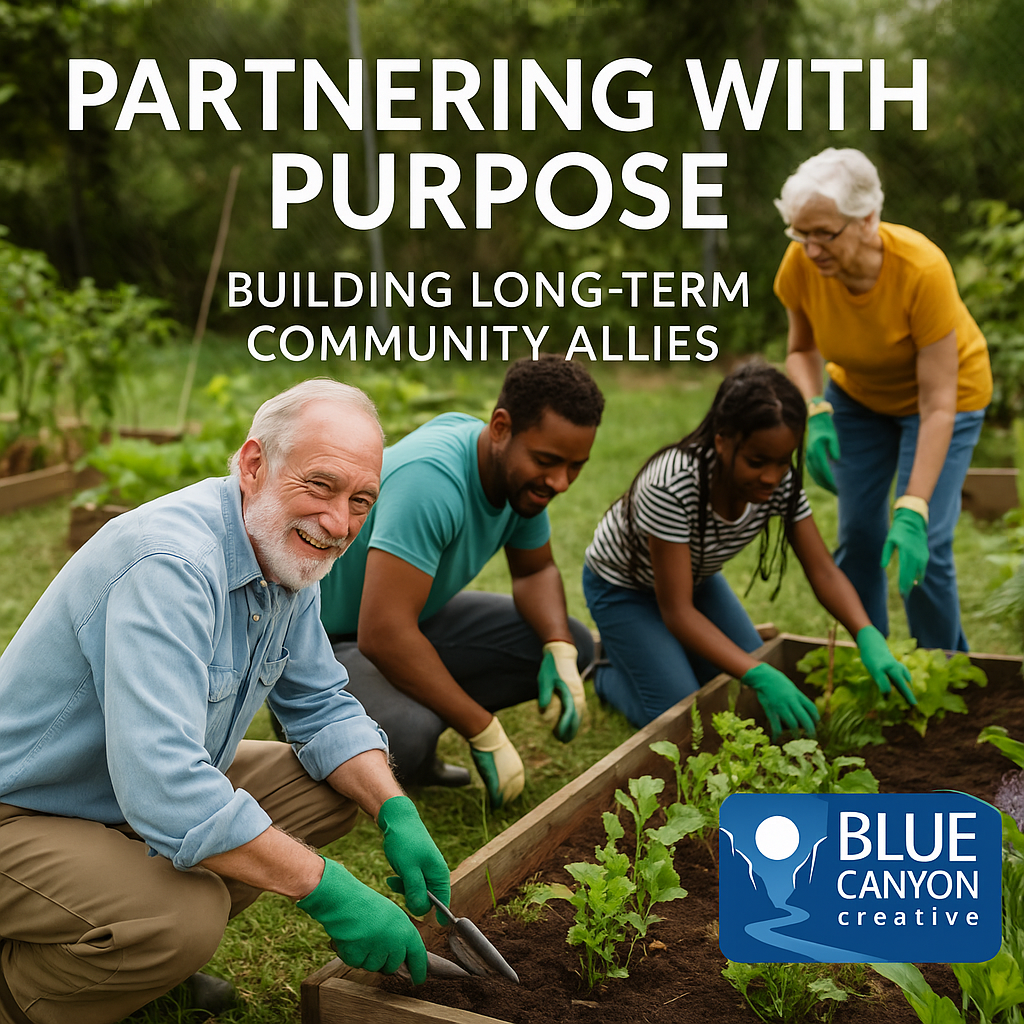Partnering with Purpose: Building Long-Term Community Allies
Partnerships are a buzzword in the nonprofit world—but not all collaborations are created equal. Too often, nonprofits fall into short-term sponsorships that check a box but don’t actually build momentum.
If you’re ready to move beyond transactions and toward transformation, you need to shift how you approach community partnerships. It’s not about who has the deepest pockets—it’s about shared values, mutual trust, and long-term alignment.
Start with Shared Mission, Not Just Shared Resources
The strongest partnerships are grounded in common purpose. Before you reach out to a business, government agency, or another nonprofit, ask:
– Do we serve overlapping audiences?
– Do we care about the same outcomes?
– Can we amplify each other’s work in a way that benefits the community?
If the answer is yes, you’ve found a potential ally—not just a funder.
Go Beyond the Sponsorship Table
A company that donates $500 once a year is helpful—but a business that offers skill-based volunteers, co-hosts community events, or cross-promotes your work year-round? That’s a partner.
Look for ways to deepen involvement:
– Invite partners to contribute their voice to your messaging.
– Collaborate on shared impact reports or storytelling.
– Explore joint campaigns, trainings, or community town halls.
Mutual visibility strengthens trust—for both of you.
Be Honest About Capacity (Theirs and Yours)
Not every partner has time, bandwidth, or budget to show up in big ways—and that’s okay. What matters is clarity.
If you’re asking for something, be specific. If you’re offering something, be transparent about what it involves. Clarity upfront avoids burnout, resentment, and misaligned expectations later.
Honor Culture and Context
For coalitions that include Indigenous groups, faith-based communities, or grassroots collectives, the relationship has to start with cultural humility.
This includes:
– Asking permission before telling shared stories
– Respecting how each group defines leadership and voice
– Avoiding extractive messaging that benefits your brand more than the partnership itself
Highlight the Partnership Publicly
If the relationship is real, don’t keep it quiet. Featuring your allies on your website, social channels, or in your newsletters builds public trust—and gives your audience a fuller picture of who stands behind your mission.
It also shows potential partners what collaboration looks like in action. That’s a trust signal all its own.
Evaluate and Evolve Together
Strong partnerships are dynamic. As your goals evolve, so should your partnership strategy.
Set a regular check-in to ask:
– What’s working well?
– What could we shift or improve?
– Is this still the right fit for where we’re headed?
Long-term allies don’t just share outcomes—they share accountability and growth.
The Takeaway
True partnership isn’t just about who shows up to sponsor your next fundraiser.
It’s about building trusted allies who understand your mission, respect your community, and are willing to walk alongside you—not just write a check.
When you approach collaboration with purpose and transparency, you don’t just build programs. You build a movement.







